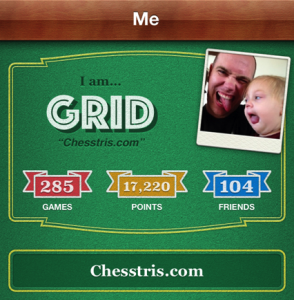I’ve been brainstorming ways to overcome the visibility problem in the App store. When releasing an iPhone application, visibility in the app store is your biggest problem. It is very easy for an app to get “buried” in the store. There are literally hundreds of applications that are launched on a daily basis. How to get the potential customer to “discover” your application is the key question that must be answered after (or when considering) development for the iOS platform. It’s worth noting, however, that the vast majority of the applications released daily are really awful, so the sheer number alone should not be a deterrent. (Yet, those crap apps are often what pushes down the visibility threshold for the rest of us.)
I am not claiming that I came up with the following solutions and/or techniques, just documenting them here for my own brainstorming purposes.
Solution 1: Marketing a recognizable name. Having a title that people recognize is certainly key. In fact, that’s the basis for any marketing effort. Get more people to recognize your product, and they will be more likely to purchase it. If you start with an existing product, it’s possible you could leverage the community that is familiar with said product (for instance, fans of a board game, if that’s what you’re making). These fans would help generate “buzz” before the game’s release, as well as ensure you have some target market upon the game’s release. This also opens up an important secondary channel for application discovery, through traditional marketing to those existing fans, whether it’s in print advertising, or online targeted marketing. (Second to discovery in the app store itself, which is by far the most effective at selling your application.) Traditional board game marketing avenues, for instance, would include Board Game Geek, (of course) traditional board game review sites or blogs, (banner ads, or better yet, actually getting reviews). Even if only a fraction of your audience have iPhones, that visibility would not be wasted.
Solution 2: Getting reviews. Another important marketing strategy is to email and otherwise contact the large number of iPhone app review sites out there. (I personally maintain a spreadsheet with a list of over 100 iOS review sites.) The most important of these by far is Touch Arcade, who also maintain a fairly influential online forum with discussion threads on almost every game for the iPhone that is released. (I think this is probably the most well known and documented of my solutions, but I’m including it here for consistency. Even though I maintain that list, I still have never sent out the press releases required for this step for ActionChess. I keep saying I’ll do it after the next major update… and maybe I will!)
Solution 3: Visual affluence. Having a very “nice looking” game will have a couple of possible effects: 1) iPhone owners (as well as Apple computer owners in general) are probably biased toward excellent design. It is certainly how Apple have continued to differentiate themselves in the desktop market, and one of the key reasons oft cited for the iPhone’s runaway success. Simply put, Apple customers are more apt to purchase a game because of how pretty it looks. It’s obvious that Apple knows this, and that it contributes to the following secondary effect: 2) Apple is more likely to “feature” a good looking app than one with the same functionality that does not look as great. There is quite a bit of precedent for this, but essentially, if your app looks good enough, it is much more likely to make it onto the front pages of the App store. (See next solution.)
Solution 4: Getting featured by apple. This is the equivalent of getting your physical product into one of the major retailers. (Target or Wallmart, for example.) You will sell hundreds, or even thousands of copies per day. In fact, getting reviews onto as many review sites as possible is not so much to get customers aware of your product, although that certainly helps, but to get the folks at Apple more aware of your product, and thus, more likely to feature it.
There are probably a lot more solutions out there. Noel of Snappy Touch has had a lot of success with in-app purchases and setting the price of his app to free. He and some other indie developers do a lot of cross-promotion that has proven successful for them as well. (I’ve read someplace that having more than one app in the app store, and cross-promoting them has a very noticeable effect on sales. Wish I could remember where.) Anyway, this isn’t comprehensive. Feel free to post your suggestions in the comments here.
 Maybe the correct place for this type of thing is in Game Center, where we already have game recommendations. (Although there is no indication why those games are recommended.) Of course we also have a friends list there. You can even see what games they own, and the ones they’ve played most recently! Why not add the option to get notified when they actually buy these games? Ideally, I want this in email form, because I’m not going to remember to open up the Game Center app with any real regularity. (And a push notification is just silly, for this, I think.)
Maybe the correct place for this type of thing is in Game Center, where we already have game recommendations. (Although there is no indication why those games are recommended.) Of course we also have a friends list there. You can even see what games they own, and the ones they’ve played most recently! Why not add the option to get notified when they actually buy these games? Ideally, I want this in email form, because I’m not going to remember to open up the Game Center app with any real regularity. (And a push notification is just silly, for this, I think.)